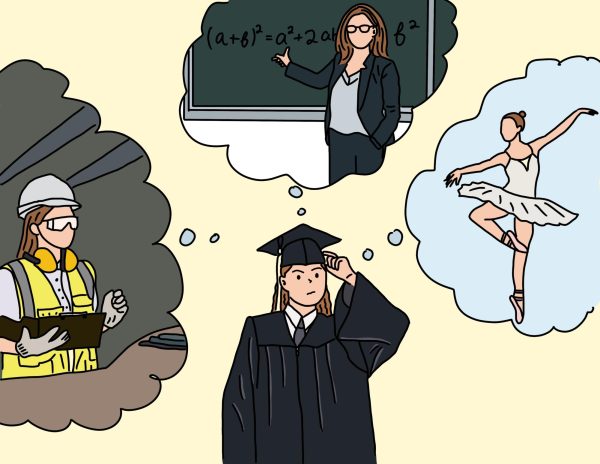The craic with Catherine: Dublin edition
February 12, 2016
Duck Tours are fun, but they don’t let you shout like a Viking at Celts on the sidewalk.
Over the weekend was an excursion to the city of Dublin. Amongst activities like a play at Abbey Theatre, a tour of the Guinness Brewery, and seeing the Book of Kells at Trinity College Library, I learned not just about the city itself but about Ireland’s history in general.
Pass by an old-looking building and admire the sturdy stone structure and the decorative pillars and windows. You discover it’s been around for decades, maybe even from the 1800s. What could this historic-looking building be? Look at the sign: it’s an Abercrombie and Fitch.
There are plenty of shopping streets filled with a variety of stores, but walk down any other street and you can forget what year it is.
I did find it a bit ironic to see a church right next to the brewery, but, as my program director explained to me, there were several churches that used to and continue to be funded by breweries and distilleries like Guinness and Jameson for the benefit of their workers.
Some of the more famous landmarks in Dublin include the General Post Office. Looking at the walls and columns outside, you can clearly see the scars from bullets shot during the 1916 Easter Rising.
An Ireland website, easter1916.net, describes various events that led to the fight between British soldiers and the Irish Volunteers. These included the emergence of World War I and the Home Rule issues with Northern Ireland.
It was a time when the fight for Irish Independence from Great Britain had become an age-old struggle, and the demonstration by the Irish Volunteers opened up the doors for the Irish War of Independence.
One of the most interesting things I saw was from a trip to the Museum of Ireland. There, I discovered Irish mummies: the bog bodies.
In central Ireland, there are peat bogs renowned for the peat the Irish used for making fires. Nowadays, they are also known for their preservation capabilities. The bodies of executed criminals were taken to these bogs, some say to prevent their spirits from going into the Otherworld.
The bodies were unusually well-kept when they were discovered. The bodies had skin, although it had become almost leathery. Some of the skeletons were still whole. Others still had their hair.
Like the total tourist I am, a trip to the National Leprechaun Museum seemed necessary. With an interactive and entertaining tour guide, I learned about the blend of Irish history and mythology. Stories and fairy tales took place in real locations all over the country.
As the guide pointed out, leprechaun fashion isn’t all green with shamrocks in their hats. They actually wear little red hats and tweed vests. But their wardrobe got lost in translation to the states. This is due in part to Walt Disney ‘s 1959 movie “Darby O’Gill and the Little People.”
The king of the leprechauns in the movie dressed regally in green, and when Lucky Charms came on the market the leprechaun we know and love donned a green outfit to be more recognizable.
My guide also mentioned leprechauns played light-hearted jokesters in what was usually dark Irish mythology. Myths like the fairy folk who took baby human boys and replaced them with their own sickly fairy babies.
Don’t ever listen to one of these stories in the dark from someone who can tell them well. You won’t sleep that night.






















